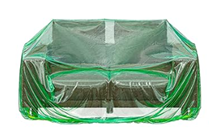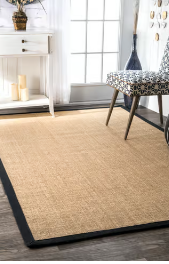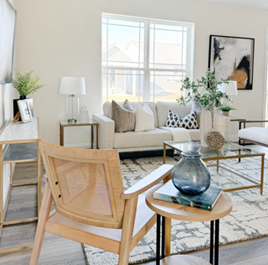As 2024 unfolds, we’re seeing a wave of trends reshaping staging in both the immediate and distant future. The concept of “long covid” has not only applied to health but also to the enduring changes in how people desire to live in their homes. The function of space in existing homes is rapidly evolving, and stagers must stay ahead of these trends to adapt their styling approaches, inventory purchases, and influence sellers, agents, and investors effectively.
The drive towards sustainability remains a dominant theme. The rise of eco-conscious staging, which I foresaw back in 2007 with the development of “EcoStaging™,” is now fully realized. This trend encompasses everything from repurposed furniture to energy-efficient lighting, focusing on minimizing environmental impact and carbon footprint. It’s crucial to note that a significant portion of consumers, including 73% of Gen Zers, are ready to invest more in ethically sourced products. Moreover, a 2020 McKinsey study highlighted a consumer shift towards ESG (Environmental, Social, and Governance) claims in products and services.
 As a stager, consider ways to reduce waste in your business. For example, swap plastic wraps for reusable furniture covers or moving blankets. When recommending flooring, think about eco-friendly options like cork, bamboo, LVP, or linoleum. Ensure hardwood is Forest Steward certified. Start with small changes in your business, like using FSC-certified paper and energy-efficient light bulbs.
As a stager, consider ways to reduce waste in your business. For example, swap plastic wraps for reusable furniture covers or moving blankets. When recommending flooring, think about eco-friendly options like cork, bamboo, LVP, or linoleum. Ensure hardwood is Forest Steward certified. Start with small changes in your business, like using FSC-certified paper and energy-efficient light bulbs.
Another emerging trend is Biophilic design, which strives to create a sense of harmony with nature. It’s about integrating elements such as lush indoor gardens, natural textures like cane and rattan, along with an abundance of greenery. For staging, consider incorporating elements like seagrass rugs, nature-inspired art, wood, and greenery.
 The real estate market is experiencing transformative shifts. First-time buyers are willing to move significant distances for affordable housing, indicating a growing need for functional home offices. The aging population suggests two primary trends: older boomers renovating their homes for longer stays, and a delay in property sales due to interest rates. This “silver tsunami” predicted for mid to late 2024 implies a need for stagers to pivot their marketing towards homeowners.
The real estate market is experiencing transformative shifts. First-time buyers are willing to move significant distances for affordable housing, indicating a growing need for functional home offices. The aging population suggests two primary trends: older boomers renovating their homes for longer stays, and a delay in property sales due to interest rates. This “silver tsunami” predicted for mid to late 2024 implies a need for stagers to pivot their marketing towards homeowners.
 Additionally, the rise in properties sold to investors due to COVID-19 has led to higher rents and an explosion in investment properties. Stagers have the opportunity to specialize in designing for these markets, including vacation rentals. Finally, the demand for multi-family dwellings offers a chance for stagers to train as Residential Renovation Project managers, reshaping homes to accommodate multi-generational living.
Additionally, the rise in properties sold to investors due to COVID-19 has led to higher rents and an explosion in investment properties. Stagers have the opportunity to specialize in designing for these markets, including vacation rentals. Finally, the demand for multi-family dwellings offers a chance for stagers to train as Residential Renovation Project managers, reshaping homes to accommodate multi-generational living.
 Buyers are increasingly seeking homes that support their wellbeing physically, emotionally, and mentally. This includes a soaring demand for features like covered porches, dedicated laundry rooms, activity or hobby rooms, walk-in pantries, ceiling fans, and simple, tranquil designs.
Buyers are increasingly seeking homes that support their wellbeing physically, emotionally, and mentally. This includes a soaring demand for features like covered porches, dedicated laundry rooms, activity or hobby rooms, walk-in pantries, ceiling fans, and simple, tranquil designs.
To delve deeper into these leading design trends, consider our comprehensive 90-minute workshop, or our Residential Decorating Consultant™ or Certified Staging Professional® programs. The next five years promise exciting developments, and we’re here to guide you every step of the way.
Living area photo: InHance IT!














 Subscribe Today!
Subscribe Today! 

